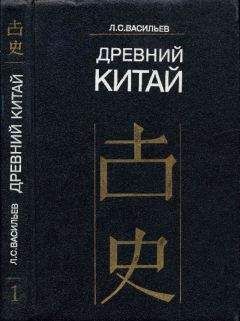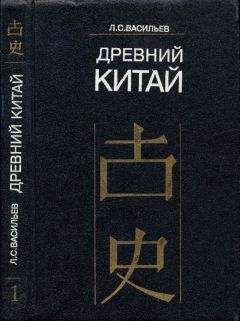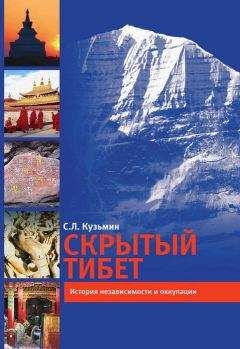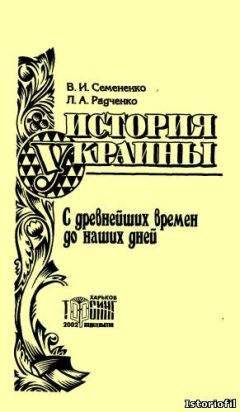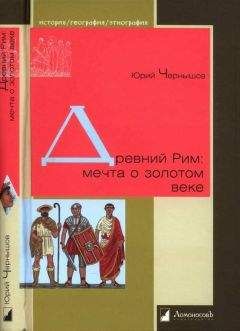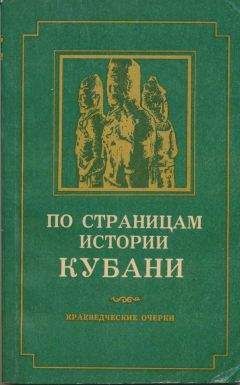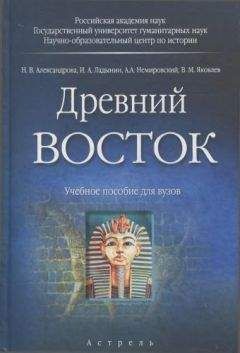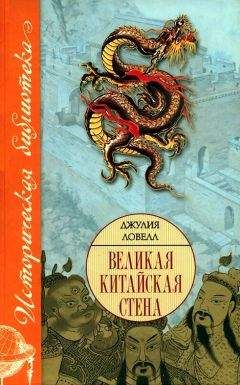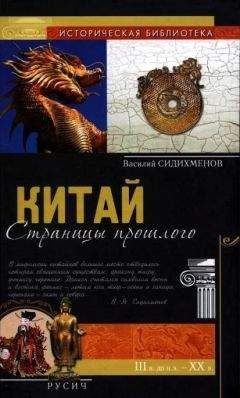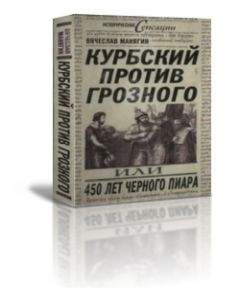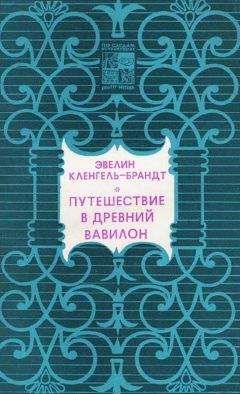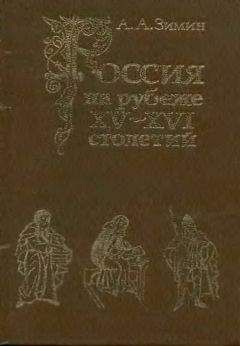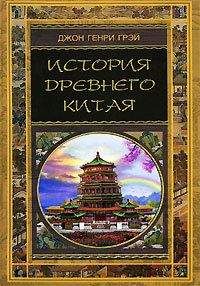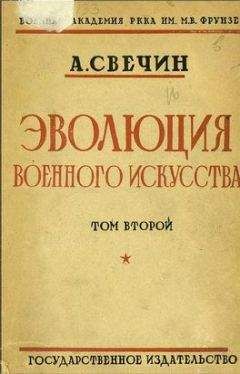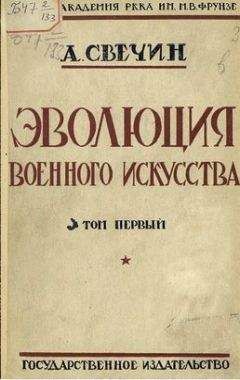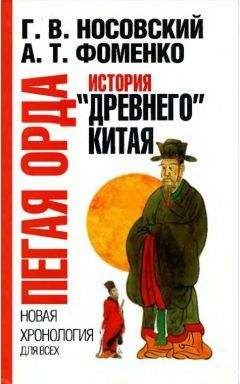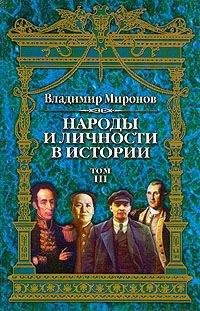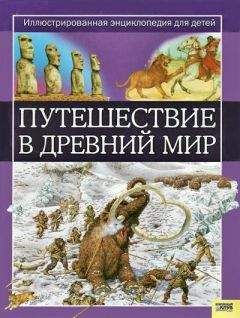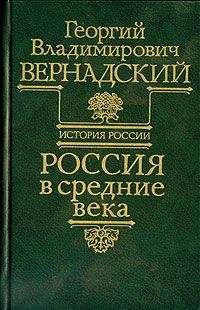Леонид Васильев - Древний Китай. Том 3: Период Чжаньго (V—III вв. до н.э.)
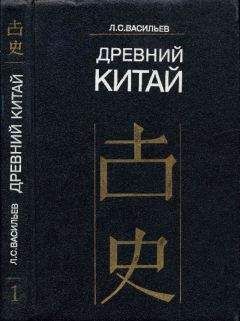
Скачивание начинается... Если скачивание не началось автоматически, пожалуйста нажмите на эту ссылку.
Жалоба
Напишите нам, и мы в срочном порядке примем меры.
Описание книги "Древний Китай. Том 3: Период Чжаньго (V—III вв. до н.э.)"
Описание и краткое содержание "Древний Китай. Том 3: Период Чжаньго (V—III вв. до н.э.)" читать бесплатно онлайн.
Заключительный том трехтомника «Древний Китай» посвящен последнему периоду существования династии Чжоу, так называемой эпохе Чжаньго («Сражающиеся царства»). Рассказывается о политической истории этого времени (V–III вв. до н. э.), об искусстве дипломатии, о реформах, способствовавших усилению прежде отсталого царства Цинь, которое, одолев соперников, основало первую в истории Китая империю. Преимущественное внимание в томе уделено переменам в характере и облике древнекитайского общества, прежде всего процессу его радикальной дефеодализации, а также развитию главных школ древнекитайской мысли, которые, особенно конфуцианство, легли в основу успешного развития китайской цивилизации вплоть до наших дней.
Bodde, 1950 — Bodde D. Statesman, Patriot and General in Ancient China. New Haven, 1950.
Book of Lord Shang, 1928 — The Book of Lord Shang. Translated from Chinese with Introduction and Notes by Dr. J.J.L. Duyvendak. L, 1928.
Broman, 1961 — Broman S. Studies on the Chou-Li. — Bulletin of the Museum of Far Eastern Antiquities. 1961, № 35.
Bulling, 1952 — Bulling A. The Meanings of China's Most Ancient Art. Leiden, 1952.
Chalmers, 1985— Chalmers J. Astronomy of the Ancient Chinese. — Legge J. The Chinese Classics. Vol. III. The Shoo king. Prolegomena. Taipei, 1985.
Chang, 1982 — Chang T. Metaphysics, Erkenntnis und praktische Philosophic in Chuan-Tzu. Tr. a/m, 1982.
Chang, 1983 — Chang A. The Concept of Li in the Political Philosophy of Hsun Tsu. — Chinese Culture. 1983. Vol. 24, № 3.
Chang Chung-yuan, 1977 — Chang Chung-yuan. The Philosophy of Taoism According to Chuan Tzu. — Philosophy East and West. 1977. Vol. 27, № 4.
Chang Kwang-chih, 1980 — Chang Kwang-chih. Shang Civilization. New Haven, 1980.
Chavannes — Chavannes Ed. Les memoires historiques de Se-ma Ts'ien. Vol. 1–6. P, 1895–1905, 1969.
Chavannes, 1906 — Chavannes Ed. Le cycle tore des douze animaux. — T'oung Pao. 1906. Vol. 7.
Cheng, 1960 — Cheng Тё-К'ип. Arhaeology in China. Vol. 2. Shang China. Cambridge, 1960.
Creel, 1953 — CreelH.G. Chinese Thought from Confucius to Mao Tse-tung. Chicago, 1953.
Creel, 1961 — Creel H.G. Confucius: The Man and the Myth. L, 1961.
Creel, 1970 — Creel H.G. The Origin of Statecraft in China. Vol. 1. The Western Chou Empire. Chicago-London, 1970.
Creel, 1970a— Creel H.G. The Beginnings of Bureaucracy in China: The Origin of Hsien. — What is Taoism and Other Studies in Chinese Culture (WTOSCC). Chicago-London, 1970.
Creel, 19706 — Creel H.G. The Fa-chia: "Legalists" or "Administrators". — WTOSCC.
Creel, 1970b — Creel H.G. On the Origin of Wu-wei. — WTOSCC.
Creel, 1974— Creel H.G. Shen Pu-hai. A Chinese Political Philosopher of the Fourth Century B.C. Chicago-London, 1974.
Crump, 1964 — Crump J.I. Intrigues. Studies of the Changuo Ts'e. Ann Arbor, 1964.
Crump, 1970 — Chan-Kuo Ts'e. Transl. by J.I. Crump. Oxf, 1970.
Debnicky, 1956 — Debnicky A. The "Chu-shu-chi-nien" as a Source to the Social History of Ancient China. Warszawa, 1956.
Dubs, 1927 — Dubs H.H. Hsun Tzu. The Moulder of Ancient Confucianism. L., 1927.
Dubs, 1928 — The Works of Hsuntze. Transl. from the Chinese with Notes by Homer H. Dubs. L., 1928.
Dumountier, 1985 — Dumountier G. Le svastika et la roue solaire dans les symboles et dans les caracteres chinois. — Revue d'ethnographie. 1985, № 4.
Eberhard, 1949 — Eberhard W. Criticism of Dubs Theory of the Influence of Zoroas-trism (Mazdaism) on Religious Taoism. — Orient. 1949, № 2.
Economic, 1954— Economic Dialogues in Ancient China. Selections from the Kuan-tzu. Ed. by L. Maverick. Carpbondale, 111., 1954.
Eisenstadt, 1986 — EisenstadtN. The Origins and Diversity of Axial Age Civilizations. N. Y., 1986.
Eitel, 1978 — Eitel E.J. Chinese Philosophy before Confucius. — China Review. 1878, № 7.
Felber, 1973— Felber R. Die Entwicklung des Austauschverhaltnisse in alten China (8–5 Jh. v.u.z.). В., 1973.
Fingarette, 1972 — Fingarette H Confucius. The Secular as Sacred. N. Y., 1972.
Fitzgerald-Huber, 1995— Fitzgerald-Huber L.G. Qijia and Erlitou: The Question of Contacts with Distant Cultures. — Early China. 20, 1995.
Forke, 1922 — Forke А. Мё Ti. В., 1922.
Forke, 1925 — Forke A. The World-conception of the Chinese. L., 1925.
Forke, 1927 — Forke A. Geschichte der alten chinesische Philosophic. Hamburg, 1927.
Fraser, 1930 — Fraser T.D.C. and Lockhart J.H.S. Index to the Tso Chuan. Oxf., 1930.
Fung, 1952— Fung Yu-Lan. A History of Chinese Philosophy. Vol. 1–2. Princeton, 1952–1953.
Graham, 1947 — Graham A.C. The Book of the Lieh-tzu. L., 1947
Graham, 1982 — Graham A.C. Chuang-Tzu. The Inner Chapters. L., 1982.
Graham, 1986— Graham A.C. Yin-yang and the Nature of Correlative Thinking. Singapore, 1986.
Granet, 1934 — Granet M. La pensee chinoise. P., 1934.
Hashimoto, 1943— Hashimoto M. Ueber die astronomische Zeiteinteilung im alten China. Tokyo, 1943.
Hsu Cho-yun, 1965 — Hsu Cho-yun. Ancient China in Transition. Stanford, 1965.
Hsun Tzu, 1963 — Hsiin Tzu. Basic Writings. Transl. by B. Watson. N. Y., 1963.
I–Ching, 1974 — I–Ching, or Book of Changes. The R. Wilhelm Translation. Rendered into English by C.F. Baynes. New Jersey, 1974.
Individualism, 1985 — Individualism and Holism: Studies in Confucian and Taoist Values. Ann Arbor, 1985.
Karlgren, 1931— KarlgrenB. The Early History of the Chou Li and Tso Chuan Texts. — Bulletin of the Museum of Far Eastern Antiquities. 1931, № 3.
Karlgren, 1940— KarlgrenB. Grammata Serica. — Bulletin of the Museum of Far Eastern Antiquities. 1940, № 12.
Karlgren, 1945 — Karlgren В. Some Weapons and Tools of the Yin Dynasty. — Bulletin of the Museum of Far Eastern Antiquities. 1945, № 17.
Keightley, 1985 — Keightley D.N. Sources of Shang History. Berkeley, 1985.
Lacouperie, 1894 — Lacouperie T. de. Western Origin of the Early Chinese Civilization from 2300 B.C. to 200 A.D. L., 1894.
Legge, 1985— Legge J. The Chinese Classics. Vol. I–V. Hongkong-London, 1861–1872; Taipei, 1985 (repr.).
Lewis, 1990 — Lewis M.E. Sanctioned Violence in Early China. N.Y, 1990.
Liao — The Complete Works of Han Fei Tzu. Translated from Chinese by W.K. Liao. L., vol. 1, 1939, vol. 2,1959.
Li Chi, 1885 — Li Chi. Sacred Books of China. The Texts of Confucianism. Transl. by J. Legge. Vol. 1–2. Oxf, 1885.
Lin, 1942 — Lin Mousheng. Men and Ideas. An Informal History of Chinese Political Thought. N.Y, 1942.
Linduff, 1995 — Linduff K.M. Zhukaigou. Steppe Culture and the Rise of Cinese Civilization. — Antiquity, № 69, 1995.
Liu, 1985— Liu Jing-shan. An Exploration of the Mode of Thinking of Ancient China. — Philosophy East and West. 1985, vol. 35, № 4.
Mair, 1980— Mair V.H. Old Sinitic Myag, Old Persian Mague, and English "Magician". — Early China. № 15, 1980.
Mair, 1995 — Mair V. Mummies of the Tarim Basin. — Archaeology. 1995, April-May.
Mei, 1929 — Mei Yi-pao. The Ethical and Political Works of Mo-tse. L, 1929.
Needham, 1956— Needham J. Science and Civilization in China. Vol.2. Cambridge, 1956.
Pokora, 1959 — Pokora T. The Canon of Laws by Li K'uei. — A Double Falsification? — Archiv Orientalni. 1959, № 27.
Pulleyblank, 1966 — PulleyblankE.G. Chinese and Indo-Europeans. — Journal of the Royal Asiatic Society. 1966, № 1–2.
Rickett, 1965 —Rickett W.A. Kuan-tzu. Hongkong, 1965.
Saussure, 1923— SaussureL.de. Le systeme cosmologique sino-iranien. — Journal Asiatique. 12 ser. T. 202, 1923.
Schafer, 1951 — Schafer E.H. Ritual Exposure in Ancient China. — Harvard Journal of Asiatic Studies. Vol. 14, 1951.
Schlegel, 1872 — Schlegel G. Sinico-Aryaca, ou Recherches sur les racines primitives clause les langues chinoises et aryennes. Batavia, 1872.
Schmidt, 1934— Schmidt P. Persian Dualism in the Far East. — Orient Studies in Honor of Dastuiji Saheb Cursetji Erachji Pavry. Oxf, 1934.
Schwartz, 1985 — Schwartz B. The World of Thought in Ancient China. Cambr, Mass, 1985.
Thompson, 1979 — The Shen Tzu Fragments. By P.M. Thompson. Oxf, 1979.
Trombetti, 1922 — TrombettiA. Elementi di glottologia. Bologna, 1922.
Ulenbrook, 1967— UlenbrookJ. Einige Ubereinstimmungen zwischen dem Chinesi-schen und dem Indogermanischen. — Anthropos. 1967. Vol. 62, № 3–4.
Ulenbrook, 1968— UlenbrookJ. Zum Chinesischen Wort hue fur "Blut". — Anthropos. Vol. 63–64. 1968-69, № 1–2.
Ulenbrook, 1970— UlenbrookJ. Zum Chinesischen Wort ti. — Anthropos. Vol.65. 1970, № 3–4.
Ulving — Ulving T. Indo-European Elements in Chinese? — Anthropos. Vol. 63–64. 1968–1969, № 5–6.
Van der Loon, 1952 — Van der Loon P. On the Transmission of Kuan-tzu. — T'oung pao. Vol. XLI, pt. 4–5, 1952.
Vandermeersch, 1965 — Vandermeersch L. La formation du legisme. P, 1965.
Vandermeersch, 1994 — Vandermeersch L. Etudes sinologiques. P, 1994.
Vasiliev, 1997 — Vasiliev LS. The Orient in XX Century and its Destiny in Future. — Oriental Studies in the 20th Century: Achievements and Prospects. Vol. II. Moscow, 1997.
Waley, 1934 — Waley A. The Way and Its Power. L., 1934. Waley, 1938 — Waley A. The Analects of Confutius. L., 1938. Watts, 1975 — Watts A. Tao: The Watercourse Way. N.Y., 1975. Watson, 1963 — Watson B. Mo Tzu. Basic Writings. Transl. by B. Walson. N.Y., 1963. White, 1920 — White К V. Chinese and Sumerian. — The New China Review. Vol. II. 1920, № 1.
Wilhelm, 1924 — Wilhelm R. I Cing. Das Buch der Wandlungen. Bd. 1–2. Jena, 1924. Yang, 1912 — Yang Chu's Garden of Pleasure. Transl. by A. Forhe. L., 1912. Zurcher, 1959 — Zurcher E. The Buddhist Conquest of China. Leiden, 1959.
Abstract and some general conclusions
The opening chapters of the last volume are dedicated to the history of the warring states of the Chankuo period ("The Warring States", the 5th-3rd centuries B.C.). We provide a brief description of events in each of them, including the domain of the Son of Heaven (t'ien-tzu), i.e., the wang of Chou. A detailed account is given of wars and politico-diplomatic actions which accompanied that protracted and vehement strife between kingdoms and coalitions formed by them. The profound transformation of internal structure that changed the entire aspect of the Chou China is also discussed. Special attention is given to the process of defeudalization that had already begun in the late phases of Ch'unch'iu period.
The end of Ch'unch'iu period was marked by a number of important innovations. China saw the beginning of Iron Age. Cheaply produced iron tools were used for converting virgin lands into plowed fields. This contributed to the growth of farming population and its well-being. This was also the time of the rapid progress of cities with their crafts, trades, commerce and monetary relations. Coins of different kinds found by archaeologists and dated to the late Ch'unch'iu provide proof of that. Private property, well-developed market relations, affluent commoners — something previously unheard-of — appeared in cities. Agrarian countryside also started to be involved into market relations. Farmers were selling their extra production. All those changes and innovations in economy were accompanied by major shifts in the sphere of social relations.
Top-level aristocratic elite began losing its exceptional role, though it still retained its position in the upper echelons of social hierarchy. A new social stratum, shih, emerged — later, it would become extremely important for further development of Chinese society. It might be thought of as the Chinese "middle class", which originally incorporated members of nobility, primarily the tafu warriors. Not many of warriors' sons belonging to this class could inherit father's war chariot with a team of four horses. None of the states possessed a sufficient number of chariots. As is known, it was by this criterion that the main distinction between them was drawn: small kingdoms had 100 to 200 chariots, medium kingdoms had 400 to 800 chariots, and the larger ones, up to several thousand. In a word, during the late Ch'unch'iu, the shih — that lowest stratum of the ruling classes — became the most numerous one. The influx that swelled the ranks of the shih was coming both "from above" (sons of the tafu and of higher ranking aristocrats) and "from below" (warriors with a distinguished career). Besides, literate men and experts in ritual were also admitted into the ranks of the shih, since the behest to promote the intelligent and the capable was strictly followed in China.
For the most part, the volume is an account of the activity of Confucius (who was already partly discussed in Volume II) and other outstanding thinkers and reformers of the Chankuo period. This volume's main emphasis lies on the Master's activity as a reformer: he aimed at changing the fundamental principles of Chinese life by gradually creating a new basis of strict socio-ethical norms. Confucius fervently wished to leave behind all those evils which were so typical of the feuds waged by the ruling elite. To the reality of the past he opposed the ancient norm that he idealized and that had existed — more in words than in deeds — parallel to the world of intrigues and murders. He strove to restore the best traditions and to teach all the people to observe the ceremonies and norms of life that he unhallowed and transformed into a universally mandatory ethical standard.
Having adapted the masterfully reinterpreted tradition to serve his ends, Confucius turned out to be a great reformer. He put forward the idea of Tao as the great way of the truth and endless perfection, and he sang the "man of noble birth" (chun-tzu) as a paragon of following Tao. The primary meaning of the Master's ideas — which were revolutionary in their inmost essence — was the elimination of the social border dividing people of different descent; he wanted that border to be placed differently, viz. between the people and the rulers. The latter should be the most intelligent and capable men, like Confucius' disciples and their equals, not some opportunists who seized power by chance. As for the system of government, it must rest on those principles that he fostered: to care for the people, to understand their needs, to be able to win their trust and to lead them, and — perhaps, the most important of all — to seek no personal gain. Of course, all people loathe poverty and yearn for prosperity. However, a wise ruler must modify their wishes, moderate their ardor, and endeavor to achieve such a state of affairs when people would become accustomed to be content with what they have already, while constantly trying, by all legal means, to increase their wealth.
An admirer of things ancient, the Master was also a radical innovator. Though, to tell the truth, his compatriots failed to appreciate, let alone comprehend, this at one go. Rulers of the states who struggled for power and mostly used military strength had fully justified fears that, if they made people's welfare their priority, it would seriously handicap them. In the Chankuo period, wars occurred as often as before. However, their nature radically changed. The feudal battles of the chariot-mounted tafu "chivalry", with armor-clad infantry as auxiliary troops, were now a thing of the past. They were replaced by battles in which participated several dozen to several hundred thousand armor-clad infantrymen — armies that rulers found very expensive to sustain. This lead to imposing heavier taxes. Confucians, of all groups, opposed the increasing taxation of the people most ardently, be it the humble but steadfastly uncompromising Confucius or the unceremonious Meng-tzu (one of the most brilliant followers of the Master's cause) who shouted at rulers granting him audience.
Подписывайтесь на наши страницы в социальных сетях.
Будьте в курсе последних книжных новинок, комментируйте, обсуждайте. Мы ждём Вас!
Похожие книги на "Древний Китай. Том 3: Период Чжаньго (V—III вв. до н.э.)"
Книги похожие на "Древний Китай. Том 3: Период Чжаньго (V—III вв. до н.э.)" читать онлайн или скачать бесплатно полные версии.
Мы рекомендуем Вам зарегистрироваться либо войти на сайт под своим именем.
Отзывы о "Леонид Васильев - Древний Китай. Том 3: Период Чжаньго (V—III вв. до н.э.)"
Отзывы читателей о книге "Древний Китай. Том 3: Период Чжаньго (V—III вв. до н.э.)", комментарии и мнения людей о произведении.





